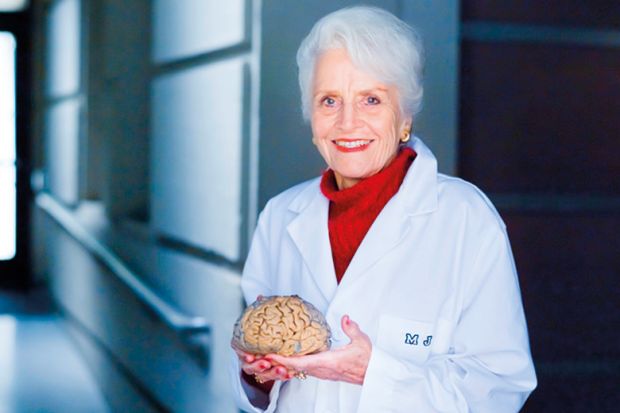A crucial figure in modern neuroscience who analysed the brain of Albert Einstein has died.
Marian Cleeves Diamond was born in Glendale, California in November 1926 and attended local schools and Glendale Community College before transferring to the University of California, Berkeley in 1946. After completing her degree in 1948, she became the first female graduate student in Berkeley’s department of anatomy and wrote a PhD thesis on the hypothalamus. She worked as a research assistant at Harvard University (1952-53) before breaking new ground again as the first female science instructor at Cornell University (1955-58), where she taught human biology and comparative anatomy.
After a short period at the University of California, San Francisco, Professor Diamond returned to Berkeley as a lecturer in 1960. She was rapidly promoted to professor of anatomy and eventually retired as professor emerita of integrative biology in 2014, at the age of 87.
By 1964, Professor Diamond had, thanks to her work on rats, produced hard evidence for the revolutionary claim that an enriched environment – toys and companions – can change the anatomy of the brain. Although her results initially attracted criticism, much of it tainted by sexism, she soon overcame opposition and went on to show how the brain can continue to develop at any age, how stimulating the brain can enhance the immune system and how male and female brains are structured differently.
These revolutionary discoveries and their implications were set out by Professor Diamond in books such as Enriching Heredity: The Impact of the Environment on the Anatomy of the Brain (1988) and Magic Trees of the Mind: How to Nurture Your Child’s Intelligence, Creativity, and Healthy Emotions from Birth through Adolescence (with Janet Hopson, 1998). She is widely credited with influencing educational policy, the management of orphanages and even the treatment of animals in laboratories and zoos all over the world.
A passionate teacher, Professor Diamond was well known at Berkeley for carrying a preserved human brain in a flowered hat box across campus to her lectures on anatomy – lectures that still enjoy a wide following on YouTube. She achieved greater public recognition in 1984 when she obtained slices of Einstein’s brain and demonstrated that it contained more glial cells per neuron in the inferior parietal area than the average male brain. Her work was also celebrated in Catherine Ryan and Gary Weimberg’s documentary, My Love Affair with the Brain: The Life and Science of Dr Marian Diamond (2016).
Professor Diamond died on 25 July and is survived by two sons and two daughters.
Register to continue
Why register?
- Registration is free and only takes a moment
- Once registered, you can read 3 articles a month
- Sign up for our newsletter
Subscribe
Or subscribe for unlimited access to:
- Unlimited access to news, views, insights & reviews
- Digital editions
- Digital access to THE’s university and college rankings analysis
Already registered or a current subscriber?




